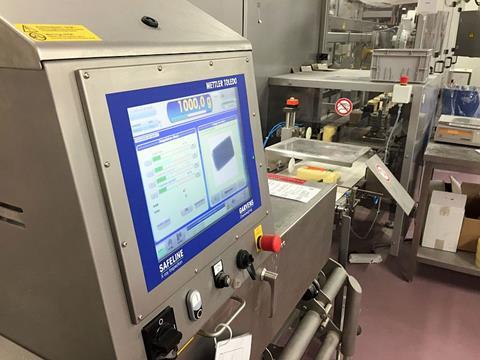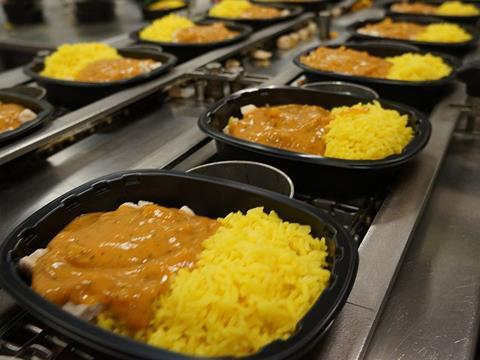
The realisation that plastics are causing permanent environmental harm, particularly to our oceans, is stimulating major social change. Major food brands are urgently seeking alternatives to single-use plastics and reviewing their longer-term packaging policies. Russell Watson, a product inspection specialist with Mettler-Toledo, explores the wider implications of plastics packaging replacement.
The plastics debate is shifting from discussion around how to clear up plastic waste to how to prevent the problem at source – and the food industry is right in the firing line. According to Break Free From Plastic, in the US and Canada Coca-Cola, PepsiCo and Nestle account for 64 per cent of all the plastics identified in clean-up operations. Politicians, pressure groups and consumers are therefore looking to the food industry to eliminate plastics from the supply chain wherever possible. With big brands keen to protect their reputations and pledging to do their bit, the packaging industry is tasked with finding alternatives.
Material considerations
However, replacing plastics as a packaging material is not that simple. Packaging is part of a complex process that ensures food is protected, delivered and presented effectively. Alternatives will, of course, have to exhibit exemplary environmental credentials. So, materials that are biodegradable and also by-products of food processing are being looked upon favourably. Examples include wood pulp cellophane, corn PLA (polylactic acid) and bagasse – a residue from sugarcane processing. More traditional alternatives are also being re-assessed: cardboard cartons may replace polystyrene burger boxes, while glass bottles – which have long been recycled – may replace plastic ones. Similarly, recyclable metal foil could be an alternative to plastic film on ready meals. Some supermarkets, such as Morrisons, have already pledged to offer paper carrier bags rather than single-use plastic bags, for consumers to transport loose goods home.
Whatever the choice from an environmental perspective, the introduction of a new packaging material will inevitably have knock-on effects for other parts of the food production process: such as the selection of production plant or transportation requirements. For example, plastic is lighter and less prone to damage in transit than glass – which can lead to difficult questions. Is higher food wastage due to breakages in transit a price worth paying for reducing plastic consumption? What about the additional fuel involved in transporting a product that is now heavier due to glass packaging – is this considered more environmentally acceptable than continuing to use lightweight, unbreakable plastic?
Another key consideration is the influence of the new material on packaging design. Can the original size and shape of pack be retained? Will the alternative material be as flexible, or as easy to mould? Will it offer the same transparency properties as plastic film? Can the branding be printed onto it directly, or is a separate label now required? In food applications, there are additional considerations in terms of the hygienic properties of any plastics packaging alternative. Nor can there be any tainting to foodstuffs caused by contact with the packaging materials.
Above all else, consumer safety must not be compromised by a change in packaging material.
Safety first

Food manufacturers invest in product inspection technologies to check that the food they produce is free from physical contamination and conforms to brand and regulatory requirements. The latter can include anything from ensuring the correct weight or fill levels to checking that the ingredients, allergens and use-by dates are properly applied. So, in terms of upholding consumer safety, it is important to consider whether product inspection performance is likely to be affected by the selection of non-plastics packaging.
Every production facility is different, but there are some general principles to bear in mind. The earlier on in the process these product inspection techniques are applied, the better. In gravity feed applications, for example, it is unlikely that a change in packaging material will have any impact on product inspection efficacy because the product is checked before it enters the pack. So, a switch from crisps in metallized plastic bags to paper bags could be achieved with no change in product inspection equipment at all.
Indeed, in most applications where the product has been previously packaged in plastic, but the new packaging material makes little or no change to the size and shape of the pack, existing product inspection equipment should require little or no adjustment. The size and format of the product under inspection is far more important than the outer packaging for effective product inspection.
So, an existing x-ray system that is checking shallow plastic packs may continue to provide excellent results if the packaging changes to shallow card boxes of similar dimensions. However, where the entire pack is redesigned and changes significantly in size and shape – for instance biscuits previously presented in a bag are now packaged in a tall box – there would be implications for the existing product inspection equipment. Indeed, it is likely that in these circumstances the entire packaging line would need to be reassessed and reconfigured to optimize performance using the new pack design.

Some replacement packaging choices will raise specific detection challenges. For example, if metal detection is already in place to spot potential contaminants on a ready meal production line, the introduction of a foil lid to replace a plastic one could compromise performance. Essentially, the metal lid may fool the inspection equipment into believing contamination has occurred. In these circumstances, the packaging line may need reconfiguring, so the product can be inspected before the foil lid is added to the package, or it may be necessary to swap metal detection for an x-ray system. However, if the plastic lid is replaced with a wood pulp cellophane, for example, there would be no adverse effect on the metal detection system at all.
Help at hand
There is growing awareness at all levels of society about the environment, food production and waste. Being able to demonstrate impeccable environmental responsibility credentials at every stage of production – from farm to fork, from wrapping to recycling – is now a key reputational factor for everyone involved in the food industry. The challenge is to maintain the high standards of safety, quality and efficiency that already distinguish the sector while improving the industry’s environmental credentials now and in the future.
Deciding on the best alternatives to plastics as a packaging material is a complex task – but it does not need not to be a lonely one. Product inspection companies are ready to support retail brands, food manufacturers and packaging companies in order to ensure that food safety remains uncompromised and investment in product inspection technologies is futureproof. Mettler-Toledo is perhaps better placed than most, in being the only manufacturer whose portfolio includes all four inspection technologies: x-ray, metal detection, checkweighing and vision inspection. As all our systems are designed and manufactured in house, we also have the ability to customize solutions in order to meet specific requirements.
Work in progress
The search for plastic packaging alternatives, driven by environmental concerns, is gaining impetus. Retailers and the packaging industry are under pressure to implement change fast. However, swapping out plastic packaging is neither simple nor cheap: and it has implications right down the supply chain. Considering all the implications, rather than implementing major change based on a single issue, will ensure that the cost and effort are worthwhile. Product inspection manufacturers are ready to help the packaging industry deliver the sustainable, long term packaging solutions that consumers want.














